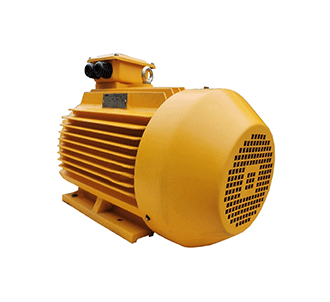High Voltage Motors vs. Low Voltage Motors: Essential Knowledge You Must Master
In industrial applications, both high voltage and low voltage motors play critical roles in powering various machinery and equipment. Understanding the differences, operational characteristics, and best practices for maintaining these motors is crucial for ensuring safe, efficient, and reliable performance. This article provides a comprehensive overview of high voltage and low voltage motors, highlighting the key knowledge points every industry professional must master.
Understanding High Voltage and Low Voltage Motors
The primary difference between high voltage (HV) and low voltage (LV) motors lies in their operating voltage range:
High Voltage Motors: Typically operate at voltages above 1000V, ranging from 3.3 kV to 13.8 kV. They are used in heavy-duty industrial applications such as mining, power generation, and large-scale manufacturing.
Low Voltage Motors: Operate at voltages below 1000V, typically in the range of 230V to 690V. These motors are common in smaller-scale machinery, HVAC systems, and general manufacturing processes.
Key Differences Between High Voltage and Low Voltage Motors
1.Power Output:
HV motors provide higher power output (typically above 200 kW) and are suitable for large industrial equipment.
LV motors deliver lower power output (usually below 200 kW) and are ideal for smaller, less energy-intensive applications.
2.Size and Construction:
HV motors are larger, heavier, and more robust to handle higher electrical and mechanical stresses.
LV motors are more compact and easier to install in confined spaces.
3.Efficiency and Energy Consumption:
HV motors generally offer higher efficiency, reducing energy losses over long operating hours.
LV motors are less efficient for large-scale applications but cost-effective for low-power requirements.
4.Insulation and Protection:
HV motors require advanced insulation systems and protection mechanisms to withstand high electric stress.
LV motors use simpler insulation systems but still require proper protection against environmental factors.
5.Maintenance Requirements:
HV motors demand specialized maintenance due to complex components like high-voltage windings and advanced cooling systems.
LV motors are easier to maintain but still require regular inspections for wear and tear.
Common Applications
High Voltage Motors: Used in large-scale industrial settings such as power plants, oil refineries, and heavy machinery.
Low Voltage Motors: Found in household appliances, HVAC systems, and light industrial processes.
Protection Levels for High and Low Voltage Motors
Both HV and LV motors require protection from environmental hazards, which is classified by the IP (Ingress Protection) rating system. Common IP ratings include:
IP23: Limited protection against solid objects and water spray; suitable for indoor use.
IP55: Protection against dust and low-pressure water jets; ideal for industrial environments.
IP66: Complete dust protection and resistance to strong water jets; suitable for harsh outdoor applications.
Key Maintenance Considerations
1.Regular Inspections: Check for wear, insulation degradation, and bearing condition.
2.Temperature Monitoring: Ensure that motors operate within specified temperature ranges to prevent overheating.
3.Vibration Analysis: Identify mechanical imbalances and misalignments early.
4.Lubrication Management: Maintain proper lubrication of bearings to reduce friction and extend lifespan.
Selecting the Right Motor for Your Application
When choosing between a high voltage and low voltage motor, consider these factors:
Power Demand: HV motors for heavy-duty applications; LV motors for light to medium loads.
Operational Environment: Ensure appropriate protection against dust, moisture, and other hazards.
Energy Efficiency: Higher efficiency for continuous, high-power operations.
Maintenance Capabilities: Consider ease of maintenance and available technical expertise.
Conclusion
Mastering the knowledge of high voltage and low voltage motors is essential for optimizing industrial operations. Understanding their differences, protection levels, and maintenance needs ensures the right motor selection, enhances operational efficiency, and minimizes downtime. By implementing best practices, industries can ensure the longevity and reliability of both high voltage and low voltage motors.
Post time: Mar-26-2025


